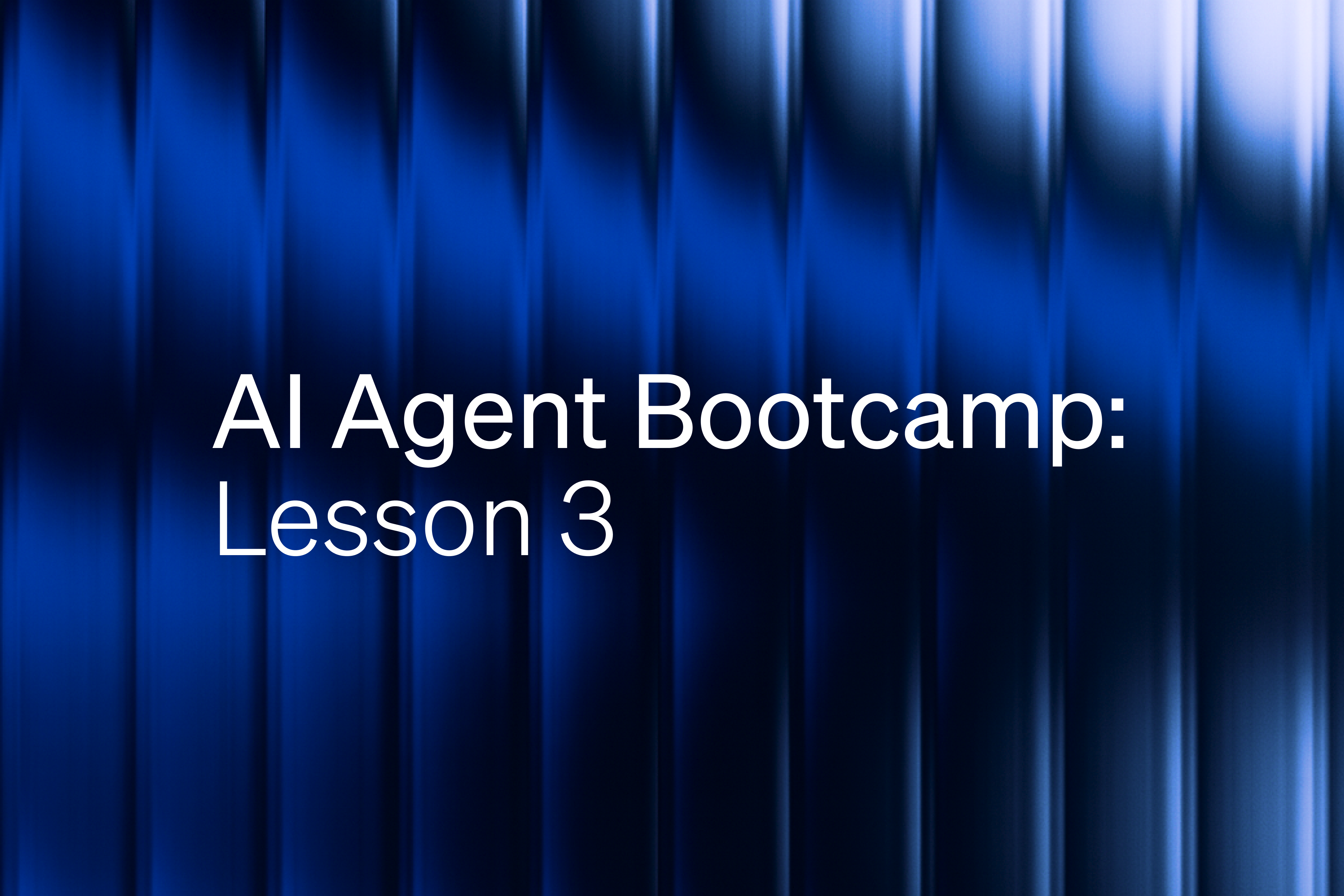The Human Element
Optimizing AI Agents—How to Expand with Confidence
In our third lesson, learn how to measure performance, refine logic, and confidently expand your first HR AI agent to drive greater impact.

Your first AI agent is live. Now comes the work that distinguishes tactical deployments from scalable transformation: optimizing performance and preparing for expansion. This lesson outlines how to monitor critical metrics, refine agent logic, and scale to additional workflows without compromising quality.
Monitor What Matters
Effective AI agent optimization starts with tracking the metrics that matter most for operational success. Almost all companies invest in AI, but just 1% believe they are at maturity. Sustained progress requires a focused, operationally relevant metrics stack.
Track these five metrics weekly:
Volume handled: The number of requests resolved without human input. This metric reflects not just adoption, but the agent’s ability to scale with demand.
Resolution rate: The percentage of total requests the agent resolves successfully, regardless of escalation. High resolution rates indicate that the agent is meeting user needs, even if it might involve a handoff.
Average response time: Measure time to first response and time to resolution. Fast response correlates directly with user satisfaction. Key benchmarks include average handle time (AHT), first contact resolution (FCR), and compliance adherence.
Escalation percentage: Understand what percentage of interactions require human involvement and why. A healthy range varies by use case, but more important than volume is identifying preventable escalations versus true exceptions.
Ongoing Evaluation: Track the accuracy of the agent’s responses and recommendations. Complex tasks should be broken into smaller, modular steps. This increases reliability and accelerates optimization.
These metrics are your foundation for every improvement cycle. Track them consistently, interpret trends—not one-off variances—and use them to drive informed, confident iteration.
Combine Data with Direct Feedback
Quantitative insights are critical, but qualitative feedback reveals what numbers miss. Effective optimization relies on both.
Interaction Logs: Analyze when, how, and where users get stuck. Patterns in timing, request types, or follow-up behavior can flag logic gaps or usability issues.
User Feedback: Post-interaction prompts, like thumbs-up/down or quick surveys, surface pain points that data alone can’t expose. Track this systematically. Unfiltered user input often accelerates iteration more than technical analysis.
Use this combined intelligence to improve logic and coverage by refining decision trees, expanding knowledge bases, and adjusting escalation triggers. Consider adjusting scope by adding new capabilities or removing functions that consistently require human intervention. This feedback loop also helps spot new workflow opportunities where similar agent capabilities could add value.
The key is treating optimization as an ongoing process rather than a one-time adjustment. 78% of organizations reported using AI in at least one business function in 2024, a substantial jump from 55% in 2023, proof that maturity follows sustained refinement, not a one-time launch.
Expand with Clear Criteria
Scaling AI agents requires objective criteria for readiness rather than optimistic assumptions about performance. Organizations that expand too quickly often struggle with quality control and user satisfaction.
You’re ready when:
- Your agent achieves reliable resolution rates in production
- Escalations are at expectation, explainable, and decreasing
- User feedback is positive and monitorable
- A new workflow shows clear demand and follows a similar structure or logic to what your agent already handles effectively
Where to expand next: Add new regions or policy sets to your existing agent, or scale horizontally into workflows that share logic with your current implementation, such as benefits inquiries, compliance FAQs, or case triage.
The most successful expansions build on proven capabilities rather than attempting entirely new use cases. Your second deployment should feel like a natural extension of your first.
Scenario: Where Should You Scale Next?
Once your first AI agent proves value, you’ll likely face growing demand from across the organization. The question becomes: where should HR scale next?
Use these criteria to guide your decision:
- Policy- or Precedent-driven logic: Does the workflow involve clearly documented rules or precedent your agent can follow without ambiguity?
- Repetitive demand: Are you fielding a high volume of requests in this area, creating an opportunity to save time and improve consistency?
- Business impact: Will automating this workflow improve speed, reduce bottlenecks, or support a critical employee experience?
Example areas for HR-led expansion might include:
- Time and attendance corrections
- Progressive discipline and PIP administration
- Policy Q&A and compliance triage
- Work eligibility and process inquiries
- Leave coordination
The best next use case isn’t always the most complex. It’s the one that builds on what’s working, strengthens trust in AI, and frees HR to focus on higher-impact work.
Build a Repeatable Optimization Framework
Optimization isn’t a checkbox—it’s the core of scaling responsibly. As your agents mature, your team’s focus should shift from execution to continuous improvement.
Early cycles target reliability and resolution rates. Over time, you’ll layer on new capabilities: exception handling, multi-turn reasoning, deeper integrations.
The goal is to build organizational confidence through sustained, visible progress. Each improvement creates reusable frameworks and accelerates the path to your next deployment.
Agentic AI isn't a set-it-and-forget-it deployment. It’s an evolving capability that compounds value over time—if you build it with discipline. Refine performance. Expand strategically. Create a system that gets better with every cycle.
If you’re considering implementing an HR domain-specific agent, now is the time to start laying the groundwork. Talk with our team today to see how Harper—an AI agent powered by Wisq’s Agentic HR Platform—can automate HR service delivery, reduce administrative burden, and free your team to focus on strategic work.
Related







